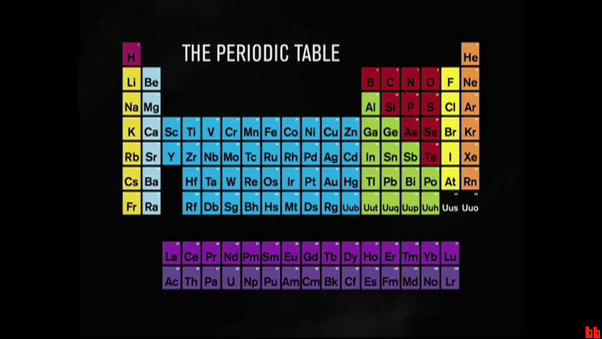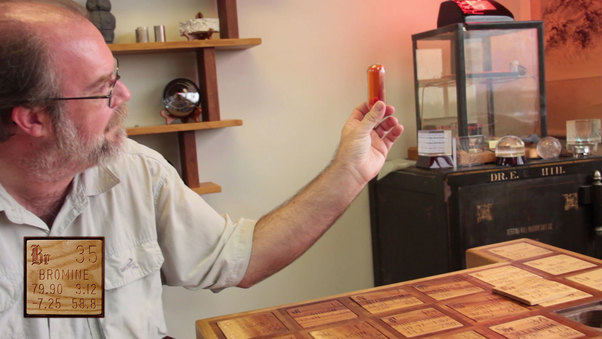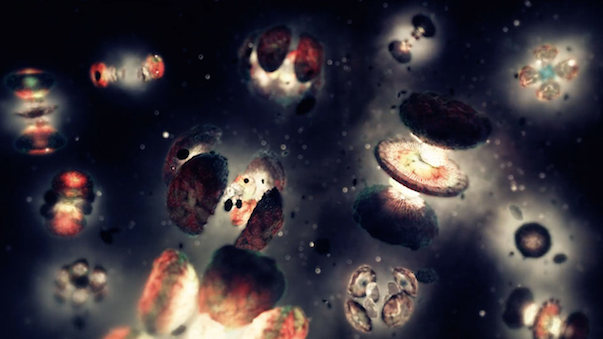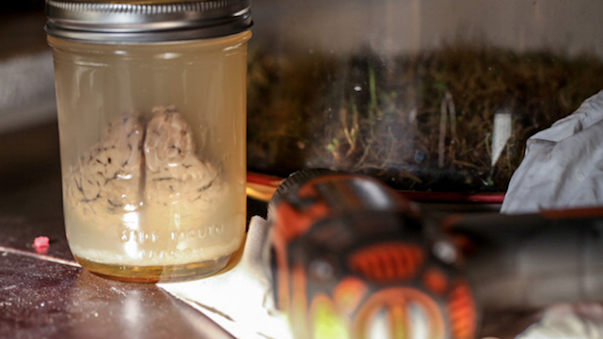This week we begin our series on adding film to the chemistry syllabus. These films explain how chemical elements serve as the fundamental building blocks of matter and illustrate the nature of atoms, molecules, and chemical reactions. The selection offers new ways to explore science- in the classroom and beyond.

Xeni Jardin’s “animated, upbeat ode to the periodic table of elements and how they form our world,” introduces chemistry fundamentals in the form of a music video for They Might Be Giants. Using well-labeled diagrams and other playful illustrations, the video identifies the components of atoms (protons/electrons/neutrons) and offers witty examples of the ways we come across various elements in our daily lives.

“Some people collect stamps. Wolfram Research co-founder and author Theo Gray collects elements. Step into his office, and you’ll see a silicon disc engraved with Homer Simpson, a jar of mercury, uranium shells and thousands of other chemical artifacts. But his real DIY masterpiece is the world’s first “periodic table table.” Within this masterfully constructed table-top lay samples of nearly every element known to man, minus the super-radioactive ones.” — Kirk Zamieroski/Adam Dylewski, directors

Aleksandar Rodic’s experimental video “was inspired by demoscene and sub-atomic particle collision images.” He explains that “the name comes from the Higgs Boson particle which is expected to provide a scientific foundation for the origin of mass in the universe. Paired with a hypnotizing soundtrack, Rodic’s colorful renderings allow us to visualize this theory more dynamically.

“Lost in a reverie, a man reels with sudden, piercing awareness of his own state of being. He ponders the world in which he lives — from the evolution of life and the atomic particles that constitute matter, to the mystery of memory and the enigma of death. Bounded by a walled enclosure, he is both unique and no different than anyone else who has searched in vain for the key to the great beyond. Through four tableaux that explore her character’s thoughts, filmmaker Mich̬le Lemieux takes a mischievous look at the profound reflections of this everyman, whose questions are part of humanity’s eternal quest for meaning. An abstract yet compelling philosophical tale, Here and the Great Elsewhere turns the Alexeïeff-Parker pinscreen into a metaphor for the particles that make up the universe.” — Michèle Lemieux, director

“The Flow looks at the supervening layers of reality that we can observe, from quarks to nucleons to atoms and beyond. The deeper we go into the foundations of reality the more it loses its form, eventually becoming a pure mathematical conception. Layer upon layer the flow builds new codes that create new codes, each version computing a new, more complex state based on the previous one.” — Markus Kay, director

As creator Masahiro Ohsuka explains, “the world is submerged in uncertainty. Atom is wave, wave is signal.” Using stop-motion animation, Ohsuka brings textbook chemistry concepts to life by adding movement to atomic diagrams, text elements, charts, etc.

“Two citizen scientists challenge the monolith of the scientific industry through their own open source experimentation, all from the comfort of their garage.
Biohacking is a small but energized movement among professional and amateur scientists alike who are taking experimentation into their own hands. The movement is embodied by an unlikely pair, who have become roommates and labmates in a small town in southern California. Gabriel & Jeff have turned their off-the-grid abode into an environmentally sustainable biotech lab where they are developing technologies like contact lenses that enable the user to see in infrared. SCIENCE FOR THE MASSES explores the motivation of these two intensely curious individuals as they challenge traditional academic and industry science, through their own open source experimentation.” — C.S. Ward & Lauren Knapp, creators